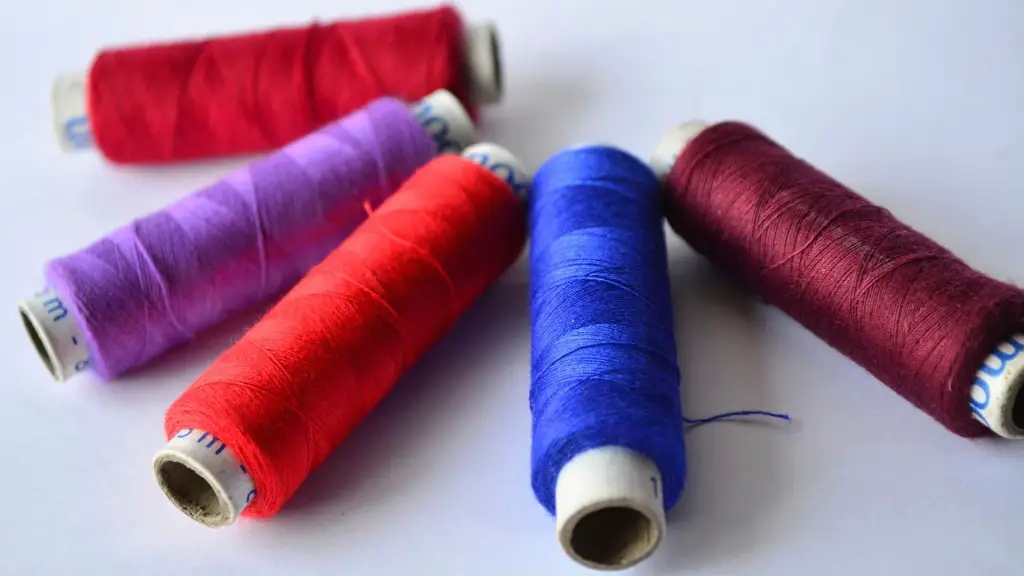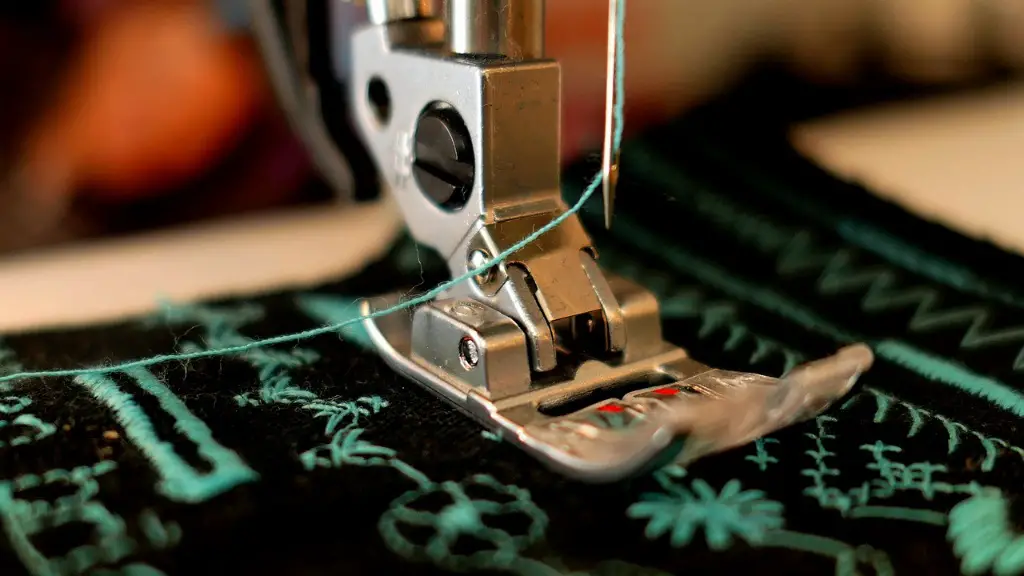Tension on a sewing machine is a vital part of properly sewing fabrics. If the tension is too tight or too loose, the stitches will not be even and the fabric may not even stay together while it is being sewn. Sewing machines are complex devices and tension adjustment can be daunting if you do not know the basics. Here, we provide the steps that one must take to adjust the tension, adjusting the tension guide, advice from experts, troubleshooting, and how to practice.
Before attempting to adjust the tension on the sewing machine, it is important to know how it works. Tension is the process of evenly stretching the needle threads through several small discs before stitching them securely into the fabric. This ensures that the stitches are even and that the fabric does not pull when the thread is sewn, so it is absolutely vital to make sure it is being adjusted properly. The tension dial is typically located on the top of the machine and should be moved when making tension adjustments.
Adjusting Tension
Making tension adjustments is not complicated but there are specific steps to follow in order to make sure that the adjustment is done properly. Firstly, it is important to make sure the machine is threaded properly. The thread should be snugly passed through the tension discs, with the last loop slightly visible. When you are ready to adjust the machine, make sure that the bobbin thread is in the appropriate position and that the presser is lightly pressed against the fabric. At this point, turn the tension dial counter-clockwise until it clicks three to four times.
On most sewing machines, the tension dial should be set between the numbers 4 and 6. If the fabric looks too loose, turn the tension dial clockwise and if the fabric looks too tight, turn the tension dial counter-clockwise. It is important to remember that the tension is set according to the fabric being sewn, so what works for one fabric may not work for another. When making tension adjustments, it is important to use the same fabric and thread for every adjustment, since this will provide a consistent result.
Advice from Experts
For those who are still intimidated by the process of adjusting the tension, there is help available from experts. An experienced tailor or seamstress can be quite helpful when it comes to correctly setting the tension. When talking to an expert, it is important to provide as much detail as possible about the fabrics and threads being used, so that they can provide the most accurate advice. In addition, the expert should have a look at the machine to ensure that all the pieces are functioning properly. Any time the machine is used for a different fabric, the tension should be checked again to ensure it is still appropriate for the fabric type.
Troubleshooting
Unfortunately, tension issues are very common on sewing machines. A common issue is when the fabric puckers, indicating that the tension is too loose. Another issue is when the thread bunches up, indicating that the tension is too tight. To troubleshoot these issues, it is important to check the tension. If the tension is too tight, turn the tension dial counter-clockwise and if it is too loose, turn the tension dial clockwise. Make sure to make small adjustments, as it is important to make sure that the fabric is properly stretched before sewing.
Practice
Making sure that the tension is correct is an important part of sewing and in order to do it well, the sewist needs to practice. An easy way to do this is to practice on scrap fabric. This will allow the sewist to ensure that the tension is adjusted properly without having to worry about ruining their work. It is also important to remember that some fabrics may require more tension than others, so it is important to make sure that the tension is regularly checked and adjusted, if necessary.
Thread Quality
In addition to making sure the tension is correctly adjusted, it is important to use the highest quality thread for the job. This is especially important if the fabric needs to be tightly or securely sewn. Low-quality thread can cause the tension to be off, as well as the stitches to be uneven. Choosing the right thread is an important part of ensuring that the fabric is sewn properly and that th tension is correct.
Bobbin Thread
Although the bobbin thread may be overlooked when adjusting the tension, it is actually quite important. The bobbin thread should be evenly wound and should not be too tight or too loose. If the bobbin thread is not correctly wound, the tension may be off. This can cause the stitches to be uneven and can also cause the fabric to become stretched or bunched up.
No Tension Issues
When your sewing machine is regularly serviced and the tension is correctly adjusted, you can be sure that you will not have to deal with tension issues. Making sure that the tension is adjusted properly is essential for making sure that the fabric does not pull and that the stitches remain even. It is also important to remember that the tension should be routinely checked as different fabrics may require different tension settings.
Check Settings
Another way to ensure that tension is not an issue is to check the settings on the sewing machine. The tension can be set according to the fabric that is being sewn, so it is important to make sure that the correct settings are selected. This will ensure that the tension is correct and that the stitches are even.
Fabric Testing
When adjusting the tension, it is important to test the fabric that is being sewn. This will give you an indication of how the tension is impacting the fabric. If the fabric bunches up or puckered, the tension may be too tight. Conversely, if the fabric does not hold together, the tension may be too loose. Once the issue has been identified, the tension can be adjusted accordingly.
Clean Machine
Regularly cleaning the sewing machine can also help to keep tension issues at bay. Cleaning the machine ensures that all the components are in proper working order, including the tension discs. This will ensure that the tension is correctly adjusted and that the fabric does not become stretched or bunched up.



